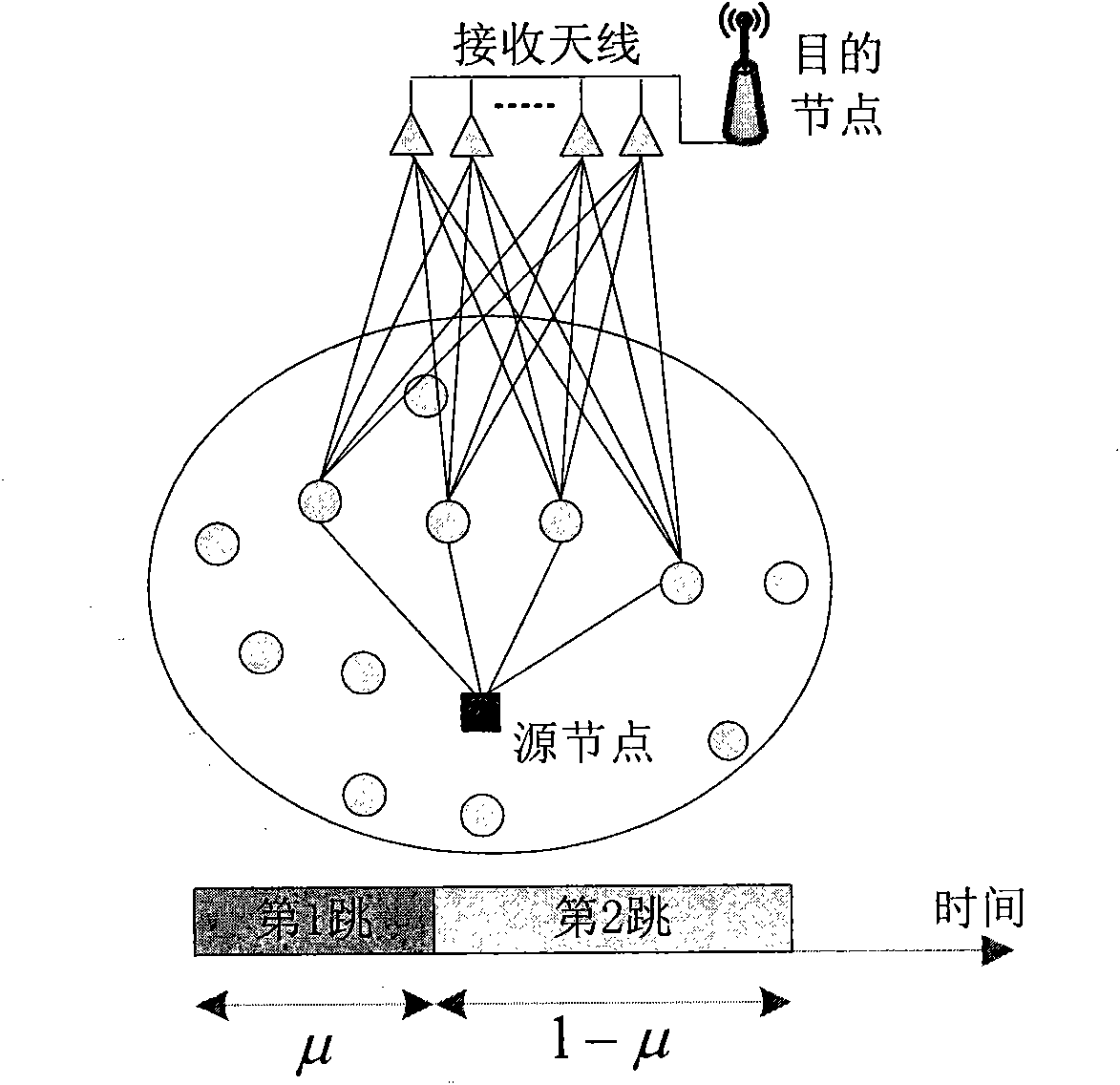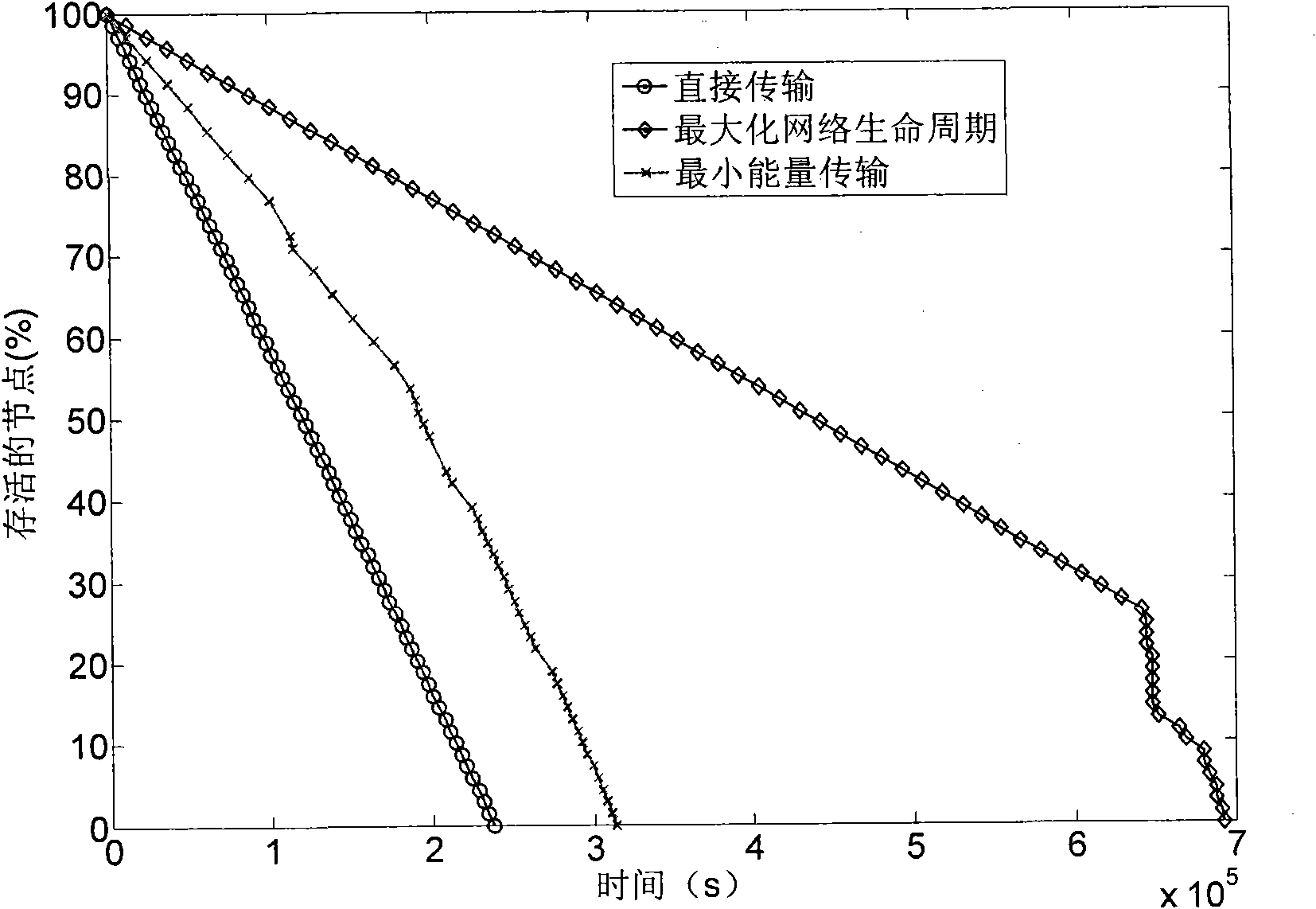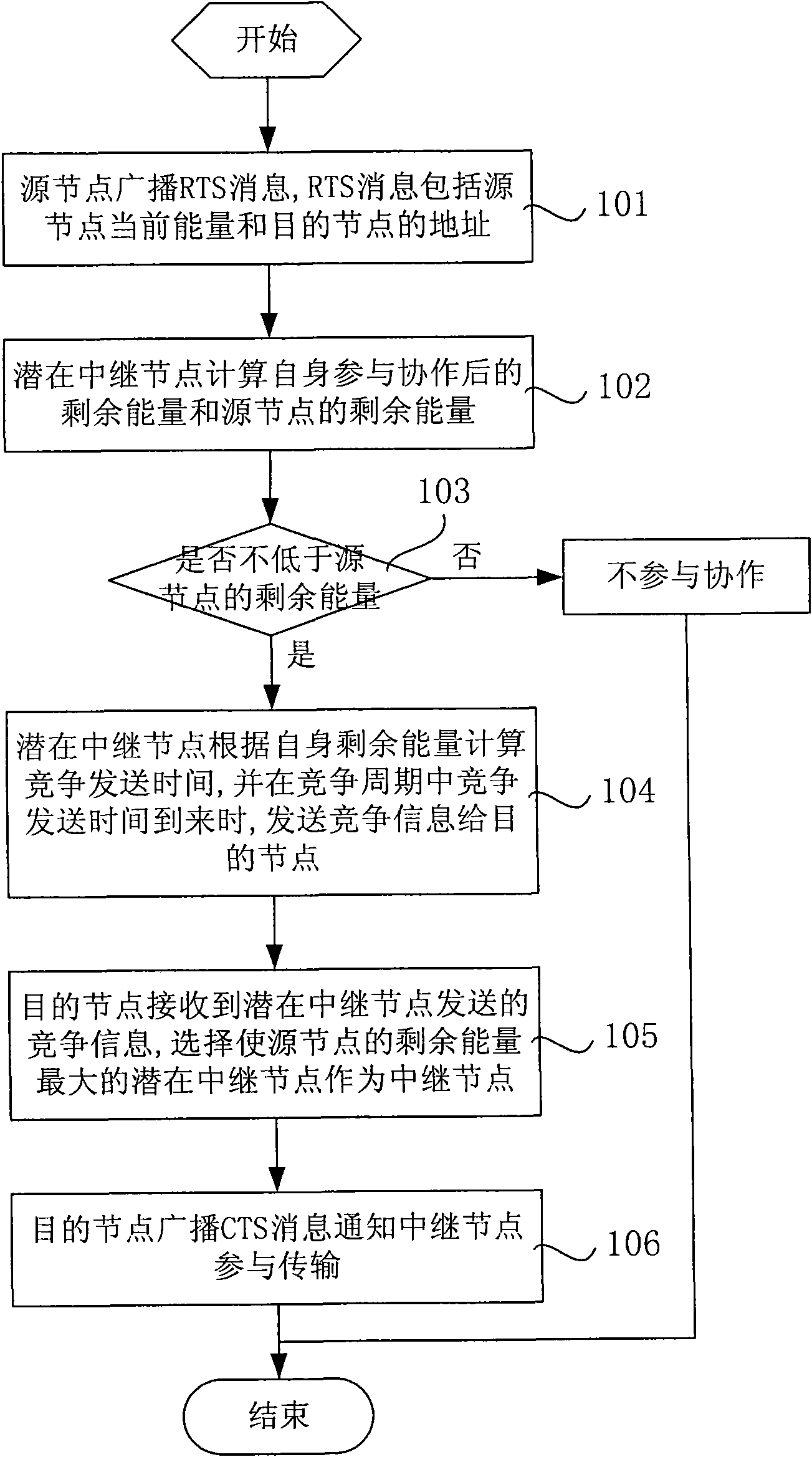Method and system for selecting collaboration relay node
A relay node and node selection technology, applied in the field of wireless communication, to achieve the effect of maximizing the life cycle and prolonging the survival time
- Summary
- Abstract
- Description
- Claims
- Application Information
AI Technical Summary
Problems solved by technology
Method used
Image
Examples
Embodiment Construction
[0028] The technical solutions of the present invention will be described in further detail below with reference to the accompanying drawings and embodiments.
[0029] Cooperative relay is also called cooperative diversity, and its principle comes from the idea of "virtual antenna array". Cooperative relay is an extension of single-path relay. One or more nodes with a common coverage area can be introduced between the source node and the destination node to act as relay nodes. The destination node can combine the information from the source node and the relay node. data. Cooperative relay can improve the transmission rate and transmission reliability of wireless links, and at the same time, it can improve the spectrum efficiency and wide-area coverage of the entire wireless mesh network. For energy-constrained wireless networks, it can be considered that under the same system capacity requirements, cooperative relay technology can reduce the required transmission energy
...
PUM
 Login to View More
Login to View More Abstract
Description
Claims
Application Information
 Login to View More
Login to View More - R&D
- Intellectual Property
- Life Sciences
- Materials
- Tech Scout
- Unparalleled Data Quality
- Higher Quality Content
- 60% Fewer Hallucinations
Browse by: Latest US Patents, China's latest patents, Technical Efficacy Thesaurus, Application Domain, Technology Topic, Popular Technical Reports.
© 2025 PatSnap. All rights reserved.Legal|Privacy policy|Modern Slavery Act Transparency Statement|Sitemap|About US| Contact US: help@patsnap.com



